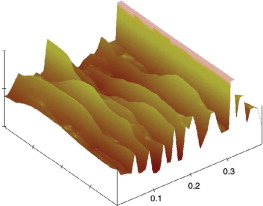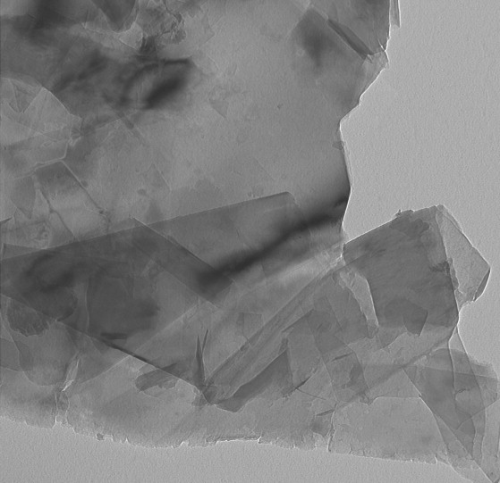

Carbon nanotubes (CNTs), discovered in 1991, promised enhanced thermal, mechanical and electrical performance properties. But the high-priced material stuck together in clumps and was extremely difficult to form into composites. A new breed of nano-materials eliminates this problem and offers potential for greater performance in a wide range of applications and markets including aerospace, automotive, energy, marine, electronics, construction, medical and telecommunications. Called nano-graphene platelets (NGPs), the newcomer, developed by Angstron Materials LLC, is a cost effective yet high quality alternative to CNTs and carbon nanofibres (CNFs).
What are NGPs?
An NGP is a nanoscale platelet composed of one or more layers of graphene plane (with a thickness of 0.34-100 nm). In a graphene plane, carbon atoms occupy a two-dimensional hexagonal lattice. These carbon atoms are bonded together through strong covalent bonds lying on this plane. In the c-axis direction, several graphene planes may be weakly bonded together through van der Waals forces.
An NGP can be viewed as a flattened sheet of a CNT. Although NGP and CNT are geometrically different in architecture, calculations indicate similar mechanical properties (in-plane stiffness and strength) and electrical conductivities. However, single-sheet NGPs have demonstrated a much higher thermal conductivity and twice the specific surface areas when compared with single-walled CNTs.
The nano-graphene material is able to reinforce polymer materials including thermosets, thermoplastics and elastomers. Melt and solution processing techniques typically used for plastics such as injection moulding and extrusion can be used to process NGP-polymer composites. These processes don't require special equipment. Something as conventional as a twin-screw extruder can be used to blend an NGP-polymer recipe.
The cost for NGPs is based largely on thickness and quantity. Thicker NGPs carry a lower price tag. A larger quantity purchase of NGPs with an average thickness of 30 nm can cost as little as US$50/kg.
Properties
Dr Bor Jang, Angstron Materials LLC, has isolated single-layer and multi-layer graphene structures from partially graphitised polymeric carbons obtained from a polymer or pitch precursor. The first to successfully produce nano-graphene sheets in 2001, Jang thermally exfoliated graphite intercalation compounds (GIC) to produce exfoliated graphite. The exfoliated graphite was subjected to mechanical shearing treatments, such as ball milling, to obtain NGPs in single to five-layer structures. The specific surface area of the prepared samples was found to be in the range of 300-1300 m2/g, as measured by the Brunauer-Emmett-Teller (BET) method.
Testing of NGPs and NGP nanocomposites revealed the following features and benefits:
- the new nano-graphene material exhibited the highest thermal conductivity known today (six times that of copper), a capability that provides faster thermal dissipation;
- electrical conductivity similar to copper yet the material's density is four times lower, resulting in lighter weight components;
- 50 times stronger than steel with a surface area twice that of CNTs;
- the capability to form a thin film, paper, or coating for electromagnetic interference (EMI) shielding and electrostatic charge dissipation (ESD) applications when the NGP loading exceeds the percolation threshold so that platelets form a network of electron transport paths. Due to the ultra-high thermal conductivity of NGPs (six times more thermally conductive, yet four times lower in density compared to copper), a nanocomposite thin film, paper, or coating can be used as a thermal management layer in a densely-packed microelectronics device;
- a high loading of NGPs (5-85% by weight) incorporated into a polymer or carbon matrix produces a nanocomposite that possesses an exceptionally high electrical conductivity for fuel cell bipolar plate applications;
- NGP nanocomposites have a good combination of mechanical stiffness, strength, micro-cracking resistance, electrical and thermal conductivities, and barrier performance at a minimal filler concentration. The NGP nanocomposites are truly multifunctional;
- for supercapacitor electrode applications, NGP-based materials can be tailored to obtain NGPs with a thickness as low as 0.34 nm and length (width) range of approximately 100 nm to 10 μm, yielding a specific area of up to 2600 m2/gm. The surfaces of NGPs can be functionalised, particularly via surface grafting or polymerisation, to achieve pseudo-capacitance induced by redox-like charge transfer.
As previously mentioned, CNTs and CNFs, being long and thin, can easily get entangled with one another or form a ‘bird's nest’ structure. As a result, the loading of these conductive nanofillers increases the viscosity of the matrix resin to a level that is not conducive to composite processing. NGP-resin systems permit low resistance-to-shear flow, even at a relatively high NGP proportion, because the two-dimensional platelets have the capability to slide over one another. This feature also enables easier application of structural adhesives and more convenient melt processing of polymer nanocomposites containing a high NGP loading.
Testing results for NGPs revealed no processing issues.
“Different grades of NGPs will work with different polymers,” says Jang. “Angstron has acquired a new 15 000 ft2 manufacturing facility to help manufacturers evaluate their requirements and match the right NGP product to the specifications required by their application. Angstron is also able to provide application development and pilot quantities for test articles as well as scale-up for required production volumes.”
Development
NGPs have demonstrated a range of unusual physical, chemical, and mechanical properties. And while practical electronic device applications for NPGs are expected to be under development for the next 5-10 years, the nano-graphene application as a nanofiller in a composite material is imminent. The availability of processable graphene sheets in large quantities is also an essential ingredient in the exploitation of composite and other applications. In addition, NGPs can be used as conductive filler for composite materials used in automotive components like a fuel line, aerospace structures, wind turbine blades and battery electrodes.
These exceptional performance characteristics also have the potential to equip manufacturers with the capability to modify and create new products to achieve competitive advantage and generate higher profit margins.



